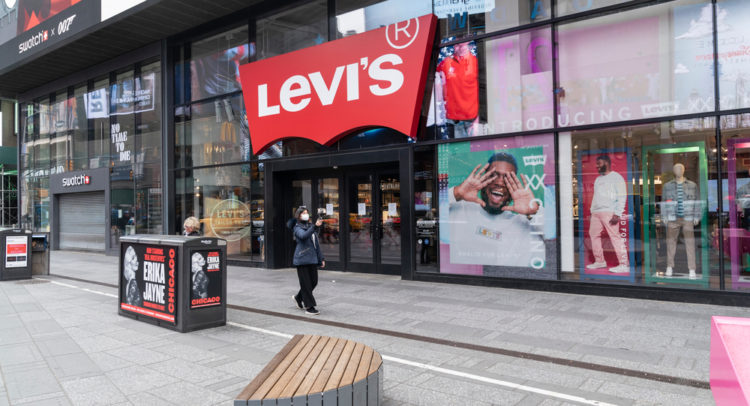Apparel company Levi Strauss & Co. (LEVI) recently delivered better-than-estimated Q3 performance with double-digit growth in its top line. During this period, Levi witnessed temporary door closures at 10% of the company-operated stores globally due to the COVID-19 situation.
Against this backdrop, let’s have a look at Levi’s financials and understand what has changed in its key risk factors that investors should know.
Net revenue of the company jumped 41% year-over-year to $1.5 billion, beating analysts’ estimates by $20.4 million. The jump in revenue was triggered by the growth in direct-to-consumer, global wholesale and digital sales.
Additionally, a 390 basis points expansion in gross margin to 57.6% contributed to an operating margin of 14.4%. Earnings per share at $0.48 outperformed the Street’s estimates by $0.11.
The President and CEO of Levi, Chip Bergh, said, “These results reflect the strength of the Levi’s brand, improving momentum in our direct-to-consumer business and the scale and agility of our supply chain network where we have executed against macro-headwinds exceptionally well.”
The company has also taken pricing actions and believes that it has the pricing power to handle inflationary pressures.
Looking ahead, Levi expects Q4 net revenue growth of 20% to 21% year-over-year. Earnings per share are expected to land between $0.38 and $0.40. (See Insiders’ Hot Stocks on TipRanks)
On October 7, Wells Fargo analyst Ike Boruchow reiterated a Buy rating on the stock with a price target of $31. The analyst thinks that Levi is successfully handling supply and cost pressures and has the pricing power to face cotton inflation.
Consensus on the Street is a Strong Buy based on 6 unanimous Buys. The average Levi Strauss price target of $36.50 implies 49% upside potential for the stock.

Now, let’s look at what’s changed in the company’s key risk factors.
According to the new Tipranks’ Risk Factors tool, Levi’s top two risk categories are Finance & Corporate and Production, which account for 26% and 24%, respectively, of the total 50 risks identified. In its recent Q3 report, the company has added one key risk factor under the Production risk category.
Levi highlights that the increasing attention of stakeholders, including consumers, employees and investors, on its environmental, social and governance practices may lead to higher costs for the company.
Additionally, any failure to implement its ESG practices successfully or achieve the associated goals may damage the company’s reputation, cause loss of investor or consumer confidence and adversely impact Levi’s operations.
The Production risk factor’s sector average is at 19%, compared to Levi’s 24%. Shares are up 24.6% so far this year.

Related News:
Cleveland-Cliffs Acquires Ferrous Processing and Trading Company for $775M
Apple to Build New Regional HQ in Los Angeles – Report
LINE Today Selects Taboola to Power Ad Module Recommendations









